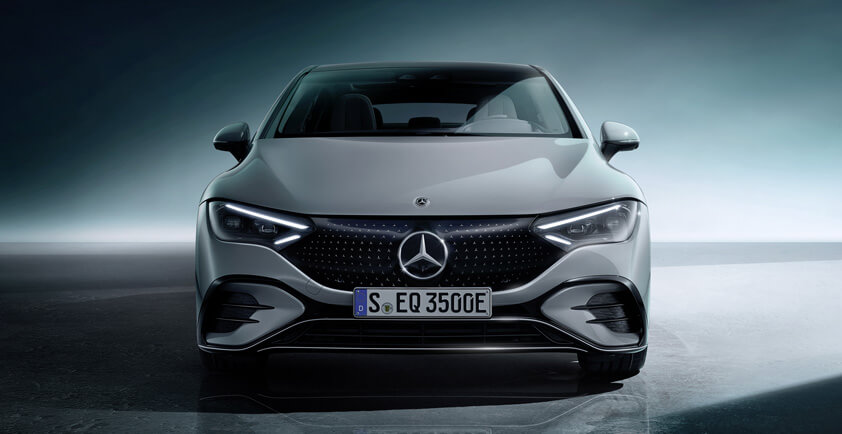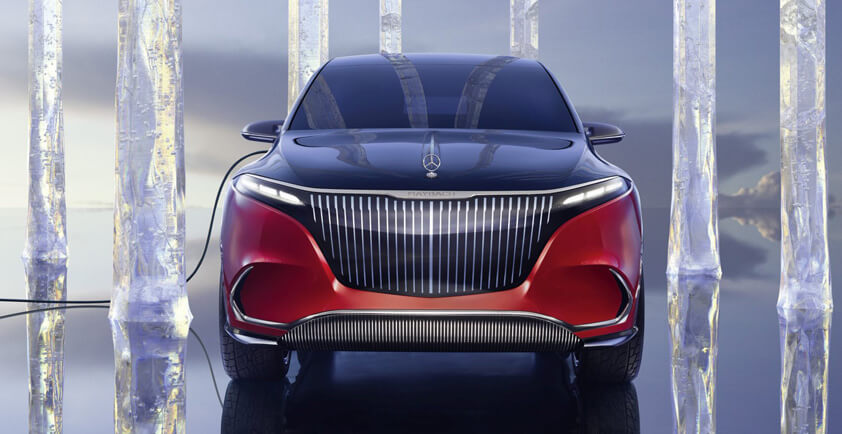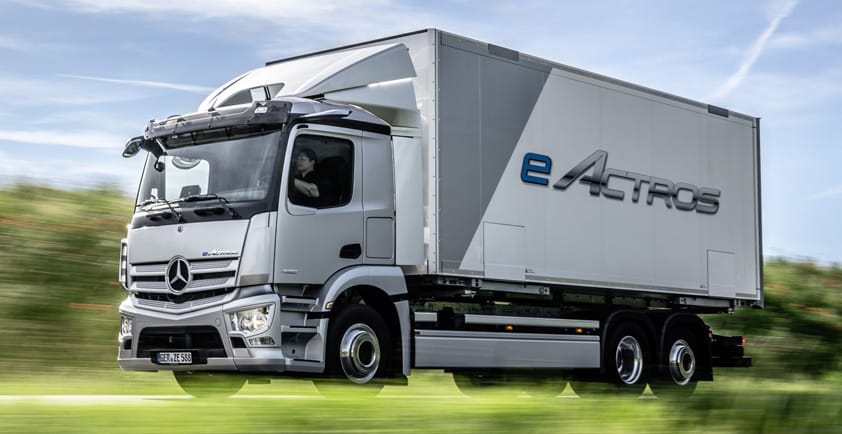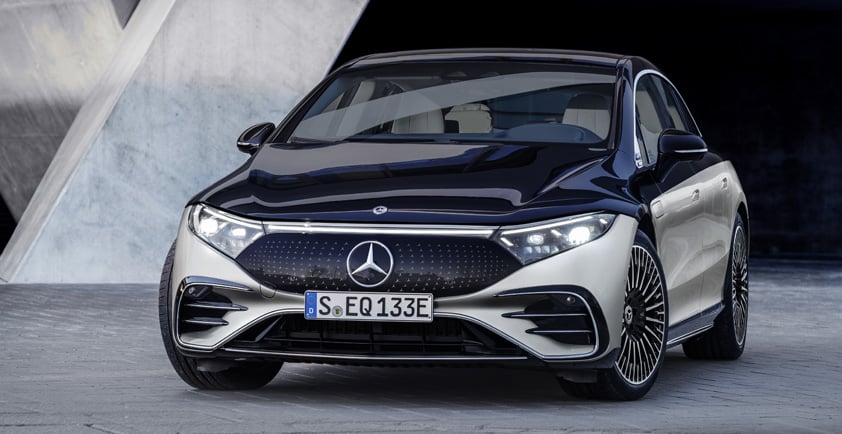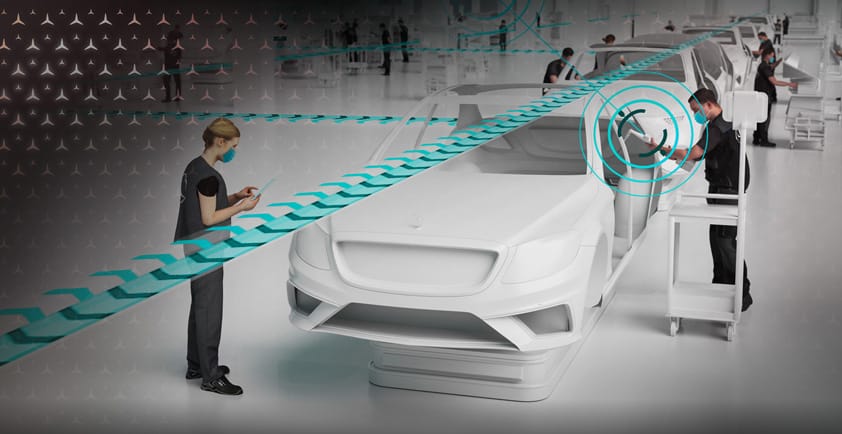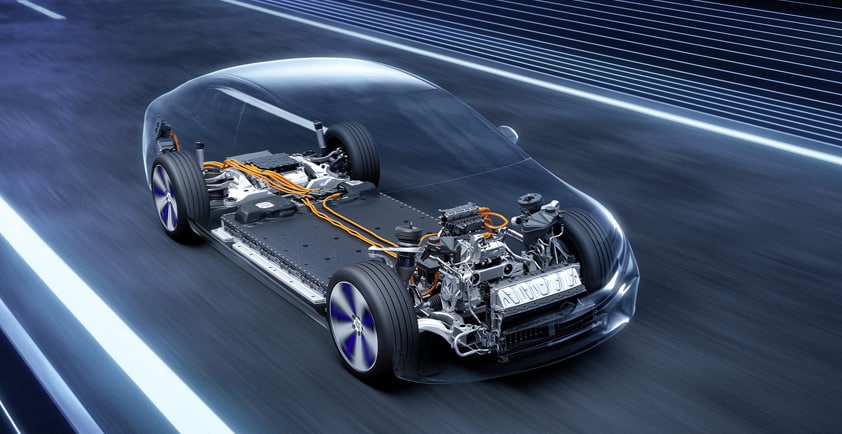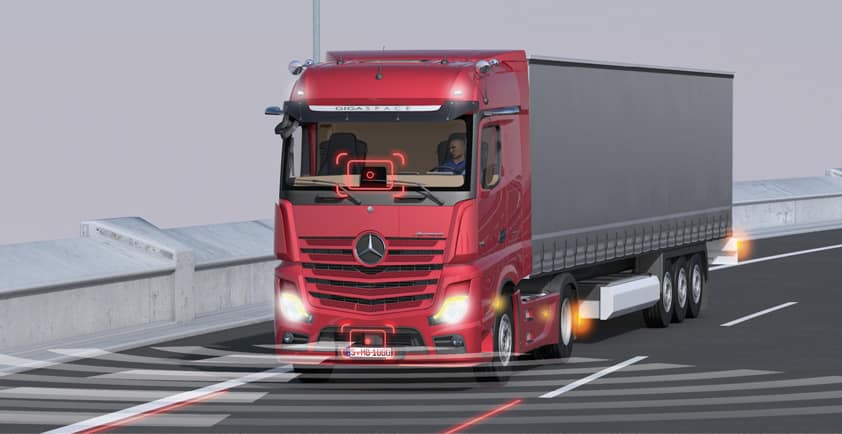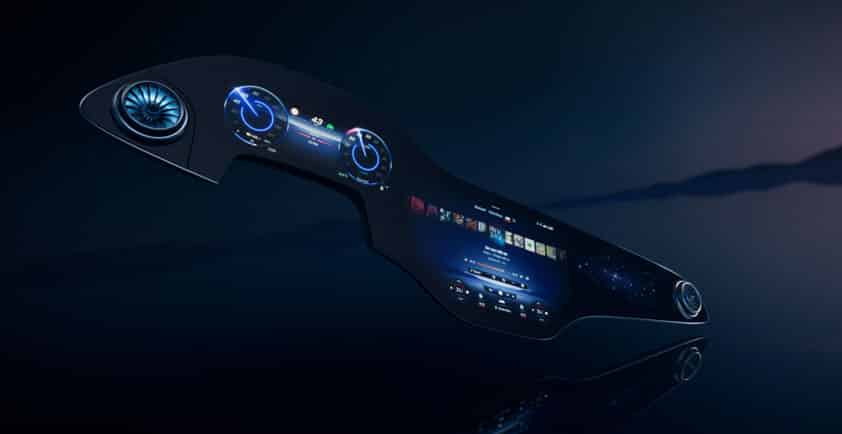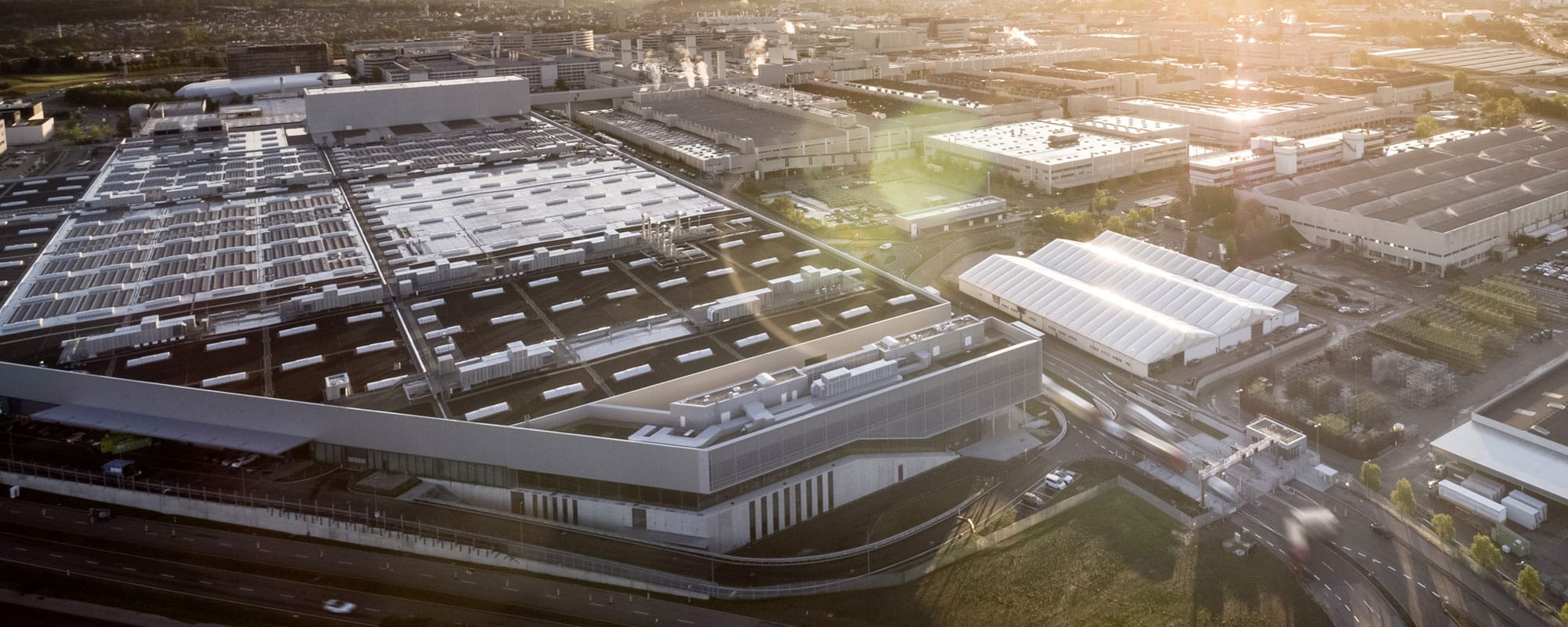
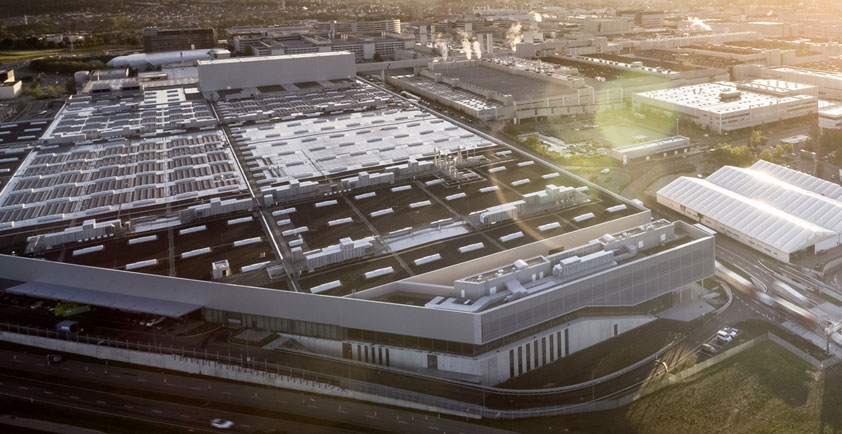
OFFICIAL OPENING OF FACTORY 56 AND START OF PRODUCTION OF THE NEW MERCEDES-BENZ S-CLASS: WITH ITS FACTORY 56, MERCEDES-BENZ IS PRESENTING THE FUTURE OF PRODUCTION
Sindelfingen. Flexible, digital, efficient and sustainable: Factory 56 embodies the future of production at Mercedes-Benz and sets new standards for the automotive industry. With an investment of approximately 730 million Euros, the factory at the Mercedes-Benz plant in Sindelfingen is a clear commitment to Germany as a business location. In total, Mercedes-Benz is investing about 2.1 billion euros at the Sindelfingen site. At the same time, the company is increasing efficiency in Factory 56 by 25 percent compared to the previous S-Class assembly. Production in Factory 56 is characterized by maximum flexibility; this applies to the number of models produced and the production volume as well as to material flows. New models – from compact cars to SUVs, from conventional to plug-in hybrid to electric drive – can be integrated into series production in just a few days. Production can be adjusted quickly and flexibly to meet market demand. In line with Ambition 2039, Factory 56 will be a zero-carbon factory – completely CO2-neutral and with significantly reduced energy requirements. This is made possible, among other things, by its innovative energy concept with a photovoltaic system, a DC power grid and energy storage systems based on reused vehicle batteries. Innovative technologies and processes have been implemented consistently and comprehensively throughout the assembly hall, providing the best possible support for the employees in their daily work. The concept of Factory 56 will be gradually transferred to all Mercedes-Benz car plants around the world as a blueprint.
“In Factory 56 we have succeeded in combining flexibility, efficiency, digitalization and sustainability. This benefits the people who work here, our production site in Sindelfingen, our company and, of course, our customers. Factory 56 thus sets the direction for the future of automobile production at Mercedes-Benz: resource-friendly, connected and flexible. Because we consider the transformation of our industry to be a holistic task that includes products as well as the entire value chain,” said Ola Källenius, Chairman of the Board of Management of Daimler AG and Mercedes-Benz AG.
Factory 56 was opened with due regard for all the protective measures against Covid-19. As well as senior representatives of Daimler AG and Mercedes-Benz AG, the guests included Winfried Kretschmann, Minister President of Baden-Württemberg, Steffen Bilger, Parliamentary Secretary of State for the Federal Minister of Transport and Digital Infrastructure, Roland Bernhard, District Administrator for Böblingen, and Bernd Vöhringer, Lord Mayor of Sindelfingen.
“Factory 56 is not only a milestone in Daimler’s corporate history, but also an important commitment to Baden-Württemberg as a location for the mobility industry. The factory stands for state-of-the-art standards – both in production and in products. Digitization and decarbonization are top priorities. Probably no other product stands for this as much as the all-electric EQS, which will be produced here,” said Winfried Kretschmann, Minister President of Baden-Württemberg.
In total, Mercedes-Benz has invested approximately 2.1 billion euros since 2014 to create a future-oriented basis for the car plant and the administrative areas located there. Of this amount, about 730 million euros is accounted for by Factory 56, which is part of the Mercedes-Benz Sindelfingen plant. The investments are a clear commitment to Germany as a business location and will also secure jobs in the region for the long term. At the same time, Factory 56 achieves efficiency gains of about 25 percent compared to the previous S-Class assembly. This has been made possible by optimizing the entire value-creation process.
Maximum flexibility thanks to an innovative assembly system
The most important feature of Factory 56 is maximum flexibility. On only one level, Factory 56 can perform all assembly steps for vehicles of different designs and drive systems – from conventional to all-electric drive. At first, the new generation of the Mercedes-Benz S-Class sedan and long-wheelbase version will drive off the production line in Factory 56. Later, the Mercedes-Maybach S-Class and the EQS, the first all-electric member of the new S-Class family, will also be produced on the same line. The assembly hall is 100 percent flexible, so that all Mercedes-Benz model series can be integrated into ongoing production in the shortest possible time, depending on demand – from compact vehicles to SUVs.
The assembly system of the future gives the entire production a more flexible structure. Two so-called TecLines serve to avoid fixed points in the assembly process, improving the flexibility of the entire factory. They bring together all the complex plant technologies at one point. This means that conversion work necessitated by the integration of new models, for example, is easier to carry out in the other areas of the assembly hall. In the TecLines, the traditional production line is replaced by driverless transport systems. To integrate a new product and incorporate any associated new technical equipment, it is only necessary to change the route of the automated guided vehicle (AGV). A total of more than 400 AGVs are in operation in Factory 56.
In addition, the so-called “Fullflex Marriage” sets a new standard for the process whereby the vehicle body is connected to the drive system. In Factory 56, this “marriage” consists of several modular stations and allows major conversion work and longer interruptions in production to be avoided.
Smart production becomes a reality
Factory 56 realizes the vision of smart production at Mercedes-Benz Cars. The centerpiece of all the digitization activities is the MO360 digital ecosystem, which is used to its full extent for the first time in Factory 56. MO360 comprises a family of software applications which are connected via shared interfaces and standardized user interfaces, using real-time data to support the worldwide vehicle production of Mercedes-Benz Cars. MO360 integrates the information from the main production processes and IT systems of the more than 30 Mercedes-Benz car plants worldwide, and brings together important software applications. It delivers significantly optimized KPI-based production control, for example. It also makes individual, needs-based information and work instructions available to each employee in real time. Major elements of MO360 are already in use at more than 30 plants around the world. MO360 combines efficiency and quality tools in a functional unit for maximum transparency in highly digitized automotive production.
In Factory 56, a new, digital infrastructure with a high-performance WLAN and 5G network provides an important basis for full digitization. It uses ultra-modern Industry 4.0 applications – from smart devices right up to big-data algorithms. Digital production technologies have been implemented everywhere. Furthermore, Factory 56 is completely paperless: Thanks to the digital tracking of each vehicle on the line via a positioning system, the vehicle data that are relevant to the employees are displayed on the line in real time, using digital devices and display screens. All in all, this will save about 10 ton of paper each year.
Machines and production equipment are interconnected throughout the entire factory; most of them are already internet-of-things (IoT) capable. This 360-degree connectivity not only extends throughout Factory 56 itself, but also beyond the facilities to the entire value chain: digital technologies such as virtual or augmented reality were already used during the development and planning of Factory 56, and also help to make series production more flexible and efficient. In dialog with suppliers and transport service providers, the benefits of tracking and tracing are also used, allowing material flows to be traced digitally around the world.
Sustainable production on a comprehensive scale
Like digitization, sustainability is viewed and implemented on a comprehensive basis in Factory 56. As well as environmentally compatible, resource-conserving production, this also includes social responsibility, always with due regard for cost-effectiveness. Factory 56 is therefore making a major contribution to achieving the company’s sustainability goals.
Conserving resources and reducing energy consumption are the cornerstones of this approach. Factory 56 is operating on a CO2-neutral basis right from the start and will be thus a zero-carbon factory. All in all, the total energy requirement of Factory 56 is 25 percent lower than that of other assembly facilities. On the roof of Factory 56 is a photovoltaic system which supplies the building with self-generated, green electric power. This is enough to cover about 30 percent of the annual power requirements of Factory 56. Some of this power flows into an innovative direct-current network, which will improve the energy efficiency of the assembly shop in the future. It powers technical systems such as ventilation units, for example. A stationary energy bank based on vehicle batteries is also connected to the DC network. With an overall capacity of 1,400 kWh, it acts as a buffer for excess solar power from the photovoltaic system. Modern lighting consisting of LEDs and an innovative blue-sky architecture, which allows employees to work in daylight, creates a pleasant working atmosphere while saving energy.
Alongside CO2 and energy balance considerations, the sustainability approach of Mercedes-Benz has other ecological aspects. There are plants on approximately 40% of the roof area. This not only compensates for the sealed ground area, but also improves the interior climate in the building by retaining rainwater. This is a new system which separates rainwater from contaminated water. By storing the rainwater, Factory 56 relieves the burden on neighboring water sources and new green areas are created.
The main building of Factory 56 is an architectural and also sustainable highlight. The concrete façade is constructed of recycled concrete for the first time, made from demolition material. This means that the construction of Factory 56 not only conserved resources, but also sustainably recycled waste products.
And not least, Factory 56 is a sign of the company’s firm commitment to the Sindelfingen plant with its long tradition. With its substantial investments within the framework of its vision for the future, Mercedes-Benz is making a major contribution to safeguarding the future and employment at the Sindelfingen plant, thereby supporting the entire region. Since the plant was founded more than 100 years ago, Daimler has been much more than just an employer for the cultural and social life of the region. The Mercedes-Benz plant in Sindelfingen is a neighbor, partner and part of the town’s diverse life.
The human at the center
Social responsibility as an employer is also reflected by Factory 56 itself. The entire digital concept places people at the center of things. Following a successful start, more than 1,500 employees will work in two shifts at Factory 56. They will be supported in the best possible way in their daily work by numerous innovations. Work on the assembly line is designed to support employees in their desire for a healthy life balance. The entire site employs about 35,000 people.
Wherever possible, Mercedes-Benz involved its employees in Factory 56 from the start; for example, the production employees were asked about their personal preferences in an online survey. They were able to state in which shift, in which area and with which colleagues they would like to work. The employee response rate was very high, and more than 85% of the wishes expressed were granted.
Modern working practices apply in both the production and administration areas of Factory 56. The sustainable organization of production is developed further with the Works Council. The layout of the production shop is also particularly attractive. The break areas in the building are modern and painted in appealing colors to create a pleasant working atmosphere for the employees. The factory has its own canteen so that staff can avoid having to walk long distances on the site. The office areas in the main building provide a modern, open working environment.
Ergonomics are a particularly important factor in Factory 56: all assembly stages were examined for their ergonomic compatibility at an early stage, so that any necessary improvements could be made. The vehicles on the line can be brought into the most favorable working positions for the employees by a choice of conveyor systems, for example, rotating overhead conveyors or mobile platforms. All stations are height-adjustable. Young and experienced colleagues work hand in hand in Factory 56, benefiting from each other as a team.

